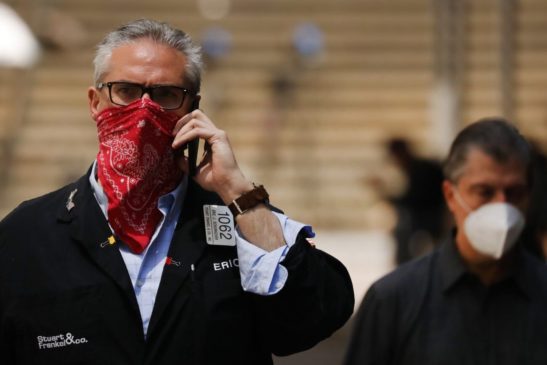- Dow Jones Industrial Average (DJIA) stock market futures pushed higher on Wednesday.
- The Nasdaq is just inches away from reclaiming its all-time high in the backdrop of a global crisis.
- Traders are now getting ‘greedy’ according to the CNN fear and greed index – a notorious warning sign for a frothy market.
Stocks continue their unstoppable rise higher, despite a backdrop of global recession, health crisis, and mass protests across America. Dow futures point to another 150 rise on Wednesday morning.
Incredibly, the tech-heavy Nasdaq Composite index is within touching distance of its all time high. There’s a growing sense of FOMO in the markets, and traders are starting to get greedy.
The CNN fear and greed index just tipped into ‘greed’ territory, with a reading of 58. It suggests investors are getting complacent. It’s also a notorious warning that stocks are getting ahead of themselves.
Dow futures soar as Nasdaq teases all-time high
The Dow looks set to continue yesterday’s gains, with futures up 204 points (0.8%) in early trading Wednesday.
S&P 500 futures were up 0.4%. But the star of the show is still the Nasdaq. Futures point to another 0.35% rise, putting it on track to take out its all-time high within days.
Tech stocks make a run for all-time highs
The stock market’s impressive rally off the March lows has been propelled largely by tech. Specifically, the big five: Apple (NASDAQ:AAPL), Amazon (NASDAQ:AMZN), Facebook (NASDAQ:FB), Google (NASDAQ:GOOGL), Microsoft (NASDAQ:MSFT). Booming ‘stay at home stocks’ like Zoom (NASDAQ:ZM) have helped pushed the tech-heavy Nasdaq within inches of its all-time high. Christophe Donay at Pictet Wealth Management explains why:
Year to date we are in positive territory for the Nasdaq, meaning that from a market selection point of view, the first winners are the disruptive, innovative companies. Most of them are listed in the Nasdaq and this is why the Nasdaq is so strong.
As many investors have pointed out, this sharp rally in tech stocks has begun to broaden out in the last week or so. Goldman Sachs chief investment officer Mike Wilson said this is often a precursor the start of a new investment cycle.
Mazen Issa, senior FX strategist at TD Securities noted that the market broadening was also happening internationally.
As intense as the rally has been, this is likely set to continue as the breadth of the equity rally has now spread outside the U.S.
The stock market is getting greedy
Despite the market’s recent broadening, stocks might be getting a little frothy up here.
While it’s not a perfect indicator, CNN’s fear and greed tool can be useful for understanding investor sentiment. And a ‘greedy’ reading is often a good contrarian indicator that stocks are getting overbought.
It means investors are growing complacent and starting to chase returns. The fear and greed tool uses a variety of factors to gauge investor sentiment. It tracks the movement of money from ‘safe’ bonds to riskier stocks, put-call ratio, and market volatility, among other things.
The gauge does a good job of pinpointing local tops and bottoms. For example, the indicator hit a greed rating of nearly 100 in January – just weeks before the fastest selloff in history.
It then hit peak fear in March, right at the market’s bottom – a fairly accurate contrarian ‘buy’ signal.
Dow still has room to run yet
The greed indicator is certainly something to watch. But we’re a long way from a euphoric reading. Historically, a greed rating at 58 could simply mean the stock market is hitting momentum. This could keep pushing higher.
If that’s accurate, where should you be looking to get exposure? Paul Sandhu at BNP Paribas told Bloomberg this morning that investors should pick their stocks carefully, rather than buying the broad index.
Investors should be cautious about moving back into broad market indexes, ETFs and asset classes like that.
He thinks the economy will look very different on the other side of this crisis. Some major industries may never fully recover. As such, he’s constructing his portfolio to reflect the future.
This article was edited by Samburaj Das.




